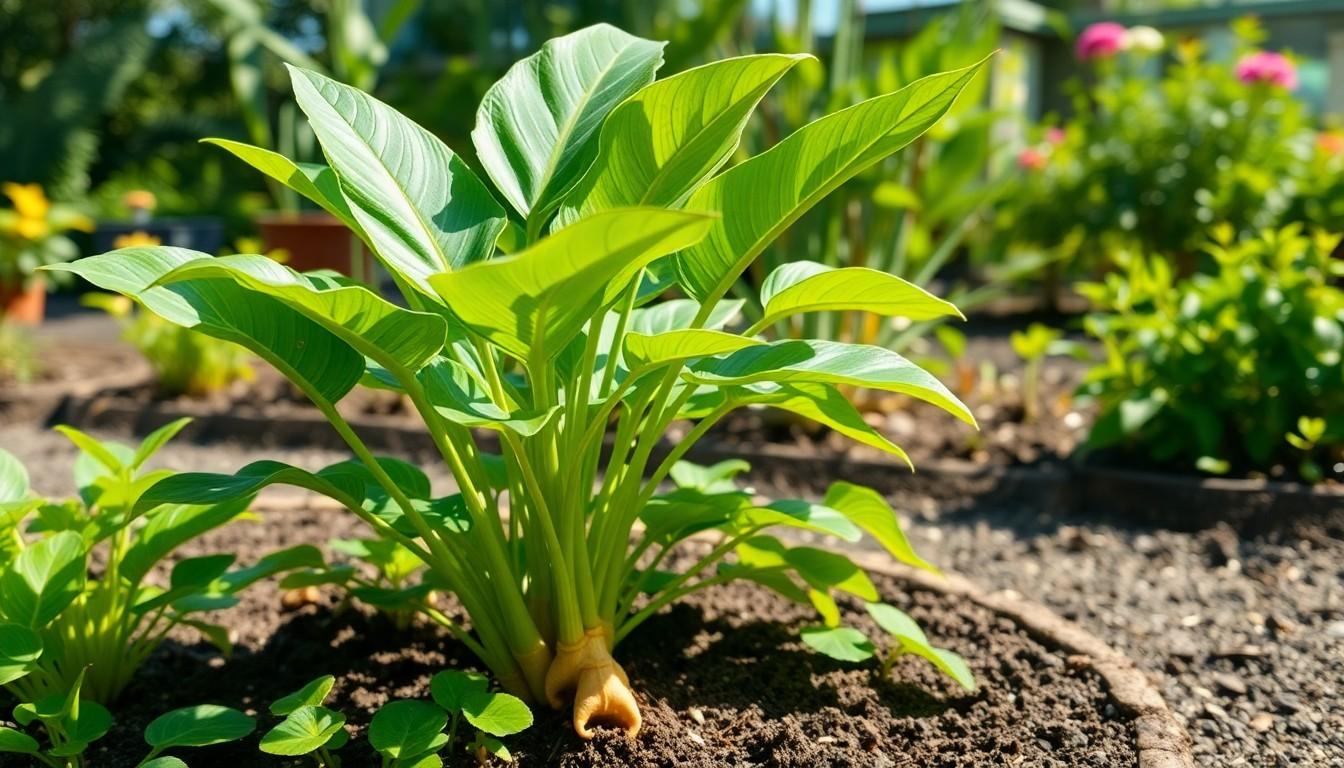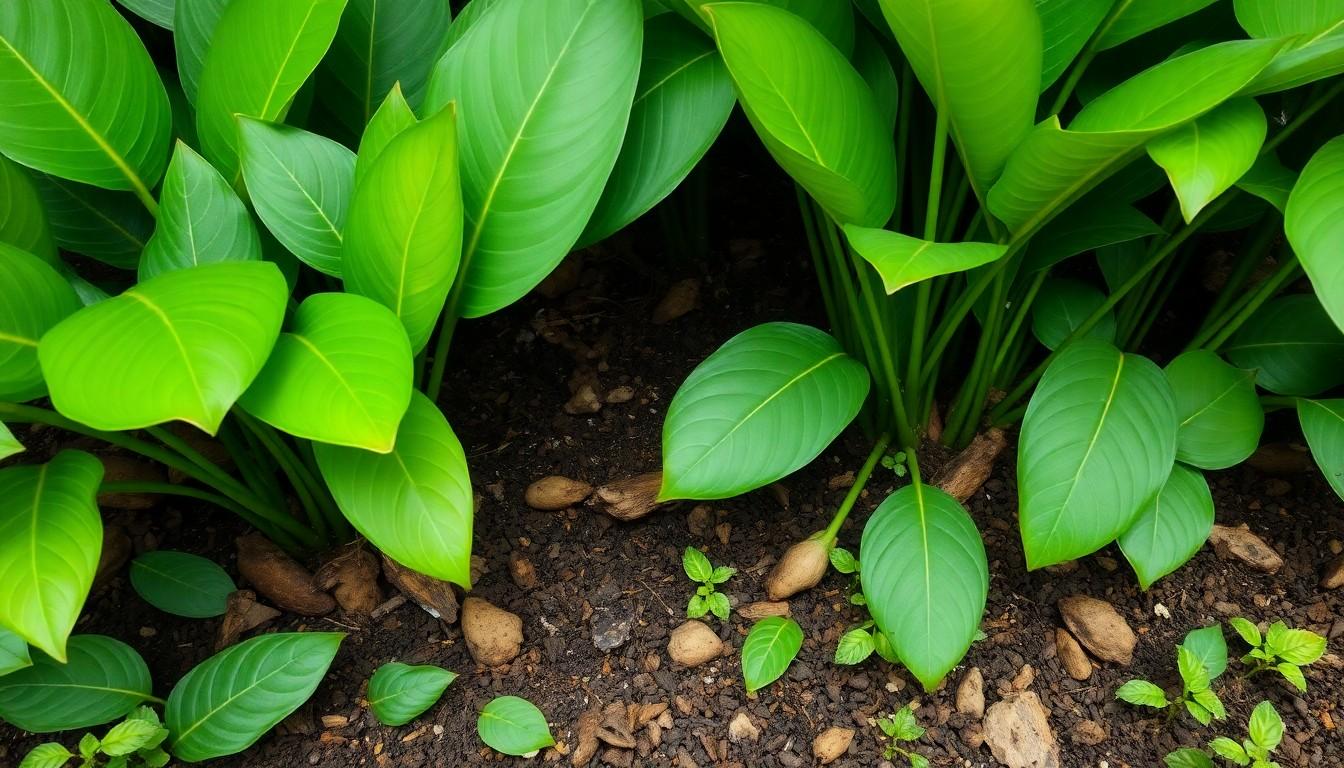Phone:
(701)814-6992
Physical address:
6296 Donnelly Plaza
Ratkeville, Bahamas.

Ginger plants are like the rock stars of the gardening world—everyone wants them, but not everyone knows how to keep them thriving. With their vibrant green leaves and spicy rhizomes, they not only add a pop of personality to any garden but also bring a little zing to the kitchen. Who wouldn’t want to grow their own ginger for that perfect stir-fry or soothing tea?
Ginger plants thrive in warm climates and offer both ornamental and culinary benefits. Their captivating foliage and aromatic rhizomes make them popular among gardeners.
Many ginger varieties exist, each with unique characteristics. Common types include the culinary ginger (Zingiber officinale), known for its thick rhizomes and pungent flavor, and ornamental types like the red turmeric (Zingiber zerumbet) that features striking flowers and foliage. Other varieties, such as galangal (Alpinia galanga), offer distinct flavors beneficial in various cuisines. Depending on the purpose, selecting the right ginger variety enhances both the garden’s aesthetics and culinary potential.
Growing ginger provides numerous advantages for gardeners. First, it improves culinary diversity, making it easier to create flavorful dishes and soothing teas. Second, ginger has medicinal properties, including anti-inflammatory and digestive benefits. Additionally, ginger plants serve as attractive landscaping elements, adding vibrant greenery to outdoor spaces. Finally, cultivating ginger can promote sustainable gardening by fostering biodiversity and encouraging organic practices.

Caring for ginger plants involves specific practices that ensure healthy growth and abundant rhizome production. Attention to location and soil quality plays a crucial role.
Ginger plants prefer warm and humid environments. They thrive in partial shade but require some direct sunlight each day. Placing them where they receive morning sun and afternoon shade promotes optimal growth. Consider areas sheltered from strong winds to prevent damage to delicate leaves. Furthermore, protecting them from frost is essential, as cold temperatures can stunt their growth. The right location not only supports plant health but enhances their aesthetic appeal in the garden.
Ginger prefers loose, well-draining soil rich in organic matter. Choosing a loamy or sandy mix increases drainage capabilities. Soil pH should range between 6.0 to 6.8 for ideal nutrient absorption. High-quality compost enhances soil fertility and encourages healthy root development. Regularly testing soil can identify nutrient deficiencies, which can then be amended with fertilizers. Maintaining consistent moisture levels is also critical, as overly dry or saturated soil can hinder rhizome quality. Healthy soil contributes significantly to robust ginger growth.
Ginger plants thrive with proper watering and fertilizing techniques. Providing consistent moisture and nutrient-rich soil fosters optimal growth and rhizome development.
Watering ginger plants requires careful attention. Keep the soil consistently moist but not waterlogged. During the growing season, typically from spring to early fall, watering every few days is ideal, especially in warm climates. In cooler months, reduce the frequency, allowing the top layer of soil to dry out between waterings. Monitor the leaves; wilting indicates the need for more water. Draining excess water prevents root rot, ensuring healthy ginger plants.
Choosing the right fertilizers contributes significantly to ginger plant health. Use organic fertilizers high in potassium and phosphorus, such as fish emulsion or seaweed extract. Applying a balanced NPK fertilizer, with a ratio like 5-10-10, supports growth and increases rhizome production. Fertilize every 4 to 6 weeks during the growing season, diluting the fertilizer to avoid burning the roots. Regular application boosts overall vitality, enhancing both culinary and ornamental appeal.
Managing pests and diseases is vital for healthy ginger plants. Proper attention here ensures vibrant growth and productive rhizome development.
Aphids commonly infest ginger plants, sucking sap and weakening the plant. Spider mites thrive in dry conditions and can lead to leaf discoloration. Whiteflies also pose a threat by transmitting viral diseases while feeding on plant sap. Additionally, mealybugs create a waxy coating that impairs photosynthesis. Fungal infections, such as ginger rust, can significantly damage foliage, leading to reduced vigor. Monitoring these pests early prevents infestations.
Maintaining clean gardening practices reduces pest risk. Regularly inspect ginger plants for signs of infestation. Employing organic insecticidal soaps or neem oil effectively controls pests without harming beneficial insects. Soils rich in organic matter support the plant’s natural defenses against pests and diseases. Ensuring proper air circulation around plants minimizes fungal growth. Keeping plants in optimal growing conditions strengthens their health and resilience. Regularly rotating crops also disrupts pest life cycles, decreasing their populations.
Ginger harvesting requires attention to specific signs that indicate maturity. Leaves will begin to yellow and wilt as the rhizomes reach their peak. This typically occurs around 8 to 10 months after planting. Observing the size of the rhizomes also aids in determining readiness; larger rhizomes indicate they are ready for harvest. Harvesting begins by carefully digging around the base of the stem to avoid damaging the roots.
Proper storage techniques ensure the longevity and freshness of harvested ginger. Firstly, store fresh ginger in a cool, dry area with good air circulation to prevent mold growth. Wrapping ginger in paper towels helps absorb excess moisture, further prolonging freshness. For longer storage, consider placing ginger in the refrigerator, where it can last up to three weeks. Alternatively, freezing ginger preserves its quality for several months; just chop or grate it before freezing for easy usage in future culinary creations.
Ginger plants offer a unique blend of beauty and utility that enhances any garden. With proper care and attention to their specific needs, these vibrant plants can thrive and provide flavorful rhizomes for culinary delights. By ensuring optimal growing conditions, maintaining soil health, and implementing effective pest management strategies, gardeners can enjoy a bountiful harvest.
Whether it’s for culinary use or simply to enjoy their striking foliage, ginger plants can be a rewarding addition to any gardening endeavor. Embracing sustainable practices while cultivating these plants not only benefits the gardener but also contributes positively to the environment. With a little patience and knowledge, anyone can successfully grow ginger and reap its many rewards.